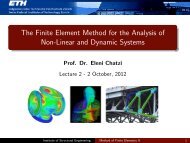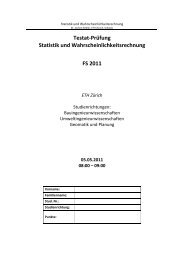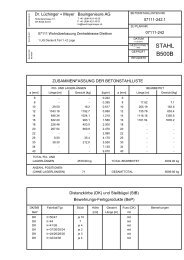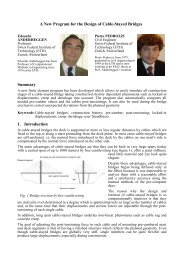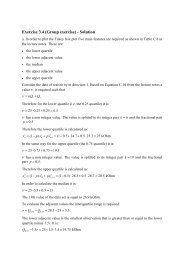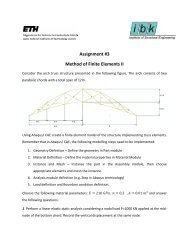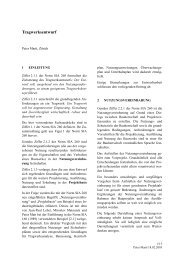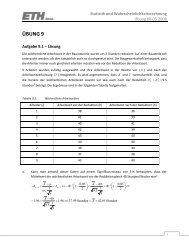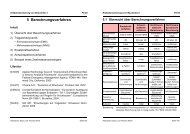Solution of Equilibrium Equations in Static Analysis: LDLT Solution ...
Solution of Equilibrium Equations in Static Analysis: LDLT Solution ...
Solution of Equilibrium Equations in Static Analysis: LDLT Solution ...
Create successful ePaper yourself
Turn your PDF publications into a flip-book with our unique Google optimized e-Paper software.
LDL T <strong>Solution</strong><br />
Recall the pivots <strong>in</strong> the Gauss elim<strong>in</strong>ation – they enter <strong>in</strong>to S (i.e. reduced K):<br />
S<br />
⎡5 −4 1 0 ⎤<br />
⎢<br />
14 / 5 −16 / 5 1<br />
⎥<br />
= ⎢<br />
⎥<br />
⎢<br />
15/7 −<br />
20/7<br />
⎥<br />
⎢<br />
⎥<br />
⎣<br />
5/6 ⎦<br />
First row <strong>of</strong> K<br />
Second row <strong>of</strong> K after step 1<br />
Third row <strong>of</strong> K after step 2<br />
Fourth row <strong>of</strong> K after step 3<br />
For the matrix D: d ij =δδ ij s ij<br />
⎡5<br />
⎤<br />
⎢<br />
14 / 5<br />
⎥<br />
D<br />
= ⎢<br />
⎥<br />
⎢ 15 / 7<br />
⎥<br />
⎢<br />
⎥<br />
⎣<br />
5/6⎦<br />
V is the right‐hand ha side after the reduction <strong>of</strong> K to upper tia triangular form<br />
V =<br />
[ 0 1 8/7 7/6]<br />
T<br />
15-Jun-07<br />
Method <strong>of</strong> F<strong>in</strong>ite Elements I<br />
15



